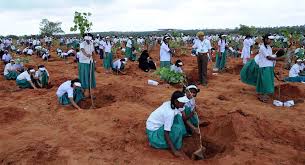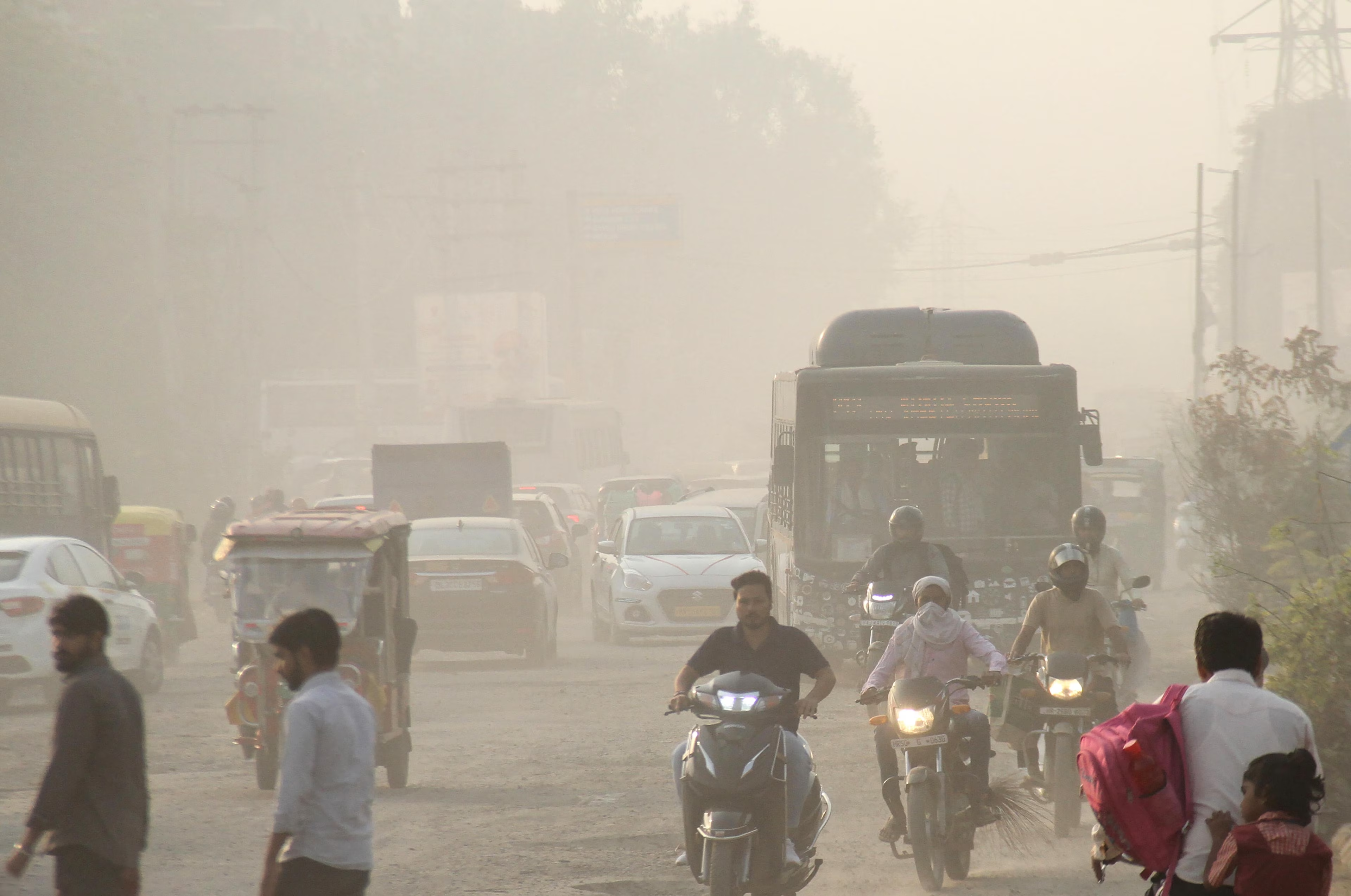The Hindu : Page 08
Syllabus : GS: 3 : Environment – Environmental pollution and degradation

Context
- The uncontrolled exploitation of forest resources has led to significant degradation of forest landscapes worldwide.
- In response, the United Nations declared 2021-2030 as the Decade of Ecosystem Restoration, aiming to restore 350 million hectares of degraded land and enhance global efforts in forest conservation and biodiversity through initiatives like mass tree planting.
Introduction
- Degraded Forest Landscapes: The exploitation of forest resources due to uncontrolled and unsustainable practices has degraded forest landscapes.
- World Bank Estimates: The World Bank estimates that the world has lost about 10 million square kilometers of forests since the start of the 20th century.
- Ecosystem Restoration: The emphasis on forest restoration approaches led to the United Nations declaring 2021-2030 as the Decade of Ecosystem Restoration.
- Initiative Targets: This initiative targets the restoration of 350 million hectares of degraded land to generate $9 trillion in ecosystem services and sequester an additional 13 gigatons to 26 gigatons of greenhouse gases from the atmosphere.
Recent Trends of Special Conservation Drives:
- Increased Initiatives: There has been a surge in global and national tree planting drives, such as the “One Trillion Project” by the World Economic Forum, Pakistan’s “10 Billion Tree Tsunami,” China’s “Great Green Wall,” and the “Bonn Challenge” to restore degraded landscapes.
- High Media Attention: These drives often feature catchy slogans and glamorous campaigns that attract substantial media attention and public involvement.
- Annual Events: India celebrates Van Mahotsava annually in July, aiming to promote tree planting and environmental conservation.
Importance of Tree Planting
- Proven Method: Tree planting is a proven method to support and sustain biodiversity and address climate-related crises and environmental challenges.
- Carbon Sequestration: It includes biological carbon sequestration, a mechanism to store and remove carbon dioxide from the atmosphere.
- Tackle Climate Change: Mass-scale tree planting is seen as a potential solution to tackle climate change globally, endorsed by both governmental and non-governmental organisations.
- Ecological Balance: Recognizing the role of trees in maintaining ecological balance, India launched the Van Mahotsava (‘festival of trees’) program in July 1950.
- Planting Program: India has celebrated this tree planting program annually in the first week of July, which has successfully motivated people and improved forest areas.
Issues Associated with These Drives:
- Limited Community Participation: Many programs lack significant involvement from local communities, affecting their effectiveness and sustainability.
- Post-Planting Measures: Insufficient focus on post-planting care and monitoring hinders the success of tree planting efforts.
- Monoculture Risks: Some drives promote monoculture, which can be detrimental to biodiversity and carbon sequestration.
- Ecological Impact: Inappropriate tree planting in non-deforested areas like grasslands or animal habitats can damage ecosystems, increase wildfire risk, and exacerbate global warming.
Post-Planting Measures and Alternative Approaches
- Measures and Monitoring: Planting saplings alone does not meet expectations without adequate post-planting measures and monitoring of tree growth.
- Government Support: Many tree-planting drives, especially those not supported by the government, lack these provisions.
- Cost-Effective Climate Solution: Contrary to popular belief, tree planting is not always a cost-effective climate solution compared to other approaches such as restoration and tree islands, which involve planting in small patches or islands.
India’s Accountability and Challenges Toward Environmental Goals:
- Achievements: India claims to have fulfilled its Paris Agreement commitments and achieved an additional carbon sink of 1.97 billion tonnes of CO2 equivalent.
- Encroachment and Loss: Approximately 10 million hectares of Indian forests are under encroachment, and about 5.7 million hectares have been lost for non-forestry purposes.
- Dependence on Forests: Nearly 27.5 crore people rely on forests for subsistence, highlighting the importance of sustainable management.
- Restoration Goals: India aims to restore 26 million hectares of degraded forests by 2030, but faces challenges such as encroachment and the need for effective tree planting strategies.
Way forward:
- Community Involvement: Need to foster local participation in tree planting drives by involving communities in planning, execution, and ongoing maintenance.
- Monitoring and Maintenance: Try to implement robust post-planting monitoring and care systems to ensure the survival and growth of planted trees.
- Policy and Strategy Improvements: To address criticism of mass planting drives, India needs to prioritize adequate financing, active community participation, and technical considerations in forestry and restoration strategies.
History of Van Mahotsav
- Van Mahotsav or 'Forest festival' is an annual one-week tree-planting festival in India.
- The history of Van Mahotsav Day goes back to July 1947.
- It was first organized by the Punjabi botanist, M.S. Randhawa.
- According to the IUCN, deforestation and forest degradation contribute around 12% of global greenhouse gas emissions and the total area occupied by primary forests in India has decreased by 3.6%.
Forest landscape restoration
- Typically, governments have relied on afforestation and reforestation as a means of establishing trees on non-treed land.
- These strategies have now evolved, and the focus now is on forest landscape restoration.
- Landscape restoration is the process of regaining ecological functionality and improving human welfare across deforested or degraded forest landscapes.
- Forest landscape restoration seeks to involve communities in the process of designing and executing mutually advantageous interventions for the upgradation of landscapes.
- Nearly 2 billion hectares of degraded land in the world (and 140 million hectares in India) have scope for potential restoration as forestland.
- A crucial aspect of the landscape restoration process is to ensure the diversity of the species while planting trees.
- Natural forests with diverse native tree species are more efficient in sequestering carbon than monoculture tree plantations.
- Planting diverse species is also healthier for local communities and their livelihoods, and has positive impact on the quality of the forests.
Importance of forest landscape restoration
- Forests are integral in regulating ecosystems, influencing the carbon cycle and mitigating the effects of climate change.
- Annually, forests absorb roughly 2.6 billion tonnes of carbon dioxide (CO2). This absorption includes nearly 33% of the CO2 released from burning of fossil fuels.
- Forests are a boon for local communities and their livelihoods by functioning as a resource base for goods and services.
- According to the World Resources Institute, forest ecosystems enrich soil fertility and water availability, enhancing agricultural productivity, and in turn the rural economy.
- Tree planting prevents erosion and stems flooding.
- Sustainable forest crops reduce food insecurity and empower women, allowing them to gain access to more nutritional diets and new income streams.
- Agroforestry lessens rural-to-urban migration and contributes to an increase in resources and household income.
- Planting trees is deeply linked to the ‘holistic’ well-being of all individuals, the community, and the planet.
Programmes carried out in India
- The span 2021-2030 is the UN Decade on Ecosystem Restoration, emphasizing efforts to restore degraded terrestrial ecosystems including forests.
- In 2011, the Bonn Challenge was launched with a global goal to restore 150 million hectares of degraded and deforested landscapes by 2020 and 350 million hectares by 2030.
- India joined the Bonn Challenge in 2015, pledging to restore 26 million hectares of degraded and deforested land by 2030.
- An additional carbon sink of 2.5 billion-3 billion tonnes of CO2 equivalent through forest and tree cover is to be created by 2030.
- Other Indian government programmes are,
o The Compensatory Afforestation,
o The National Afforestation Programme,
o The National Mission for Green India (Green India Mission),
o The Nagar Van scheme and
o The Forest Fire Prevention and Management Scheme, etc.
- There is a spotlight on youth via the Green Skill Development Programme for youth who aspire to attain employment in the environment and forest sectors.
- State governments are not far behind either, a case in point being Telangana, which has initiated a large-scale tree planting programme called Telanganaku Haritha Haram.
Hurdles in India
- Forest restoration in India faces hurdles in terms of the identification of areas for restoration, and financing.
- There is a lack of importance accorded to research and scientific strategies in tree planting, stakeholders’ conflicts of interest, etc.
Way forward
- To be successful, forest landscape restoration must be implemented proactively.
- Strengthening landscapes and forest ecosystems to be durable and adjustable in the face of future challenges and societal needs is a must.
- The restoration of natural forest ecosystems can be strengthened through participatory governance by engaging stakeholders, as in the Punjab example.
- Vulnerable forest-dependent communities should be factored in, and any effort should be tailored to the local socio-economic context and landscape history of a region.




